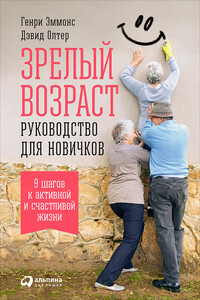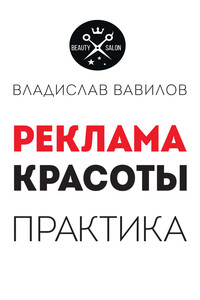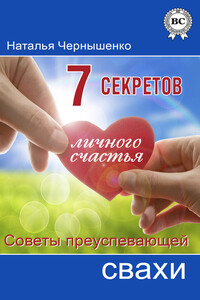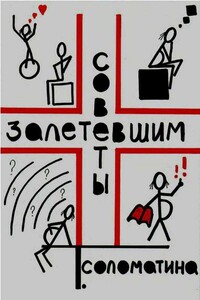Блеск и нищета бижутерии. Повседневные украшения в России и СССР, 1880–1980 годы - [3]
But the “iron curtain” went down rapidly and in 1930s import of foreign jewelry ended. Common people were not allowed to travel, and to receive parcels from abroad became very dangerous. Nevertheless there were exceptions. For example, the beloved woman of our famous poet Mayakovsky Lilja Brik could ask him in her letter (1925) to bring her some fashionable green beads. May be they were a necklace in Egyptian style, made by Max Neiger (ill. 68).
Not everyone’s destiny developed so well as that of Mrs. Brik. So was the story of our great poet A.A. Akhmatova. Her husband – also well-known poet N. Gumilev, was shot. Her son was imprisoned. Her poems were not published for a long time. All her life she loved beads, but after the Revolution they looked rather like a sign of mourning (ill. 70a-70d). Looking at her portraits one notices that on one of them she wears a rosary instead of beads (ill. 70b). Most probably it was connected with the title of the first publication of her collection of poems “Rosary” (1914), that made her famous.
Soviet girls also often wore a rosary as a necklace. They were atheist and paid no attention to their religious meaning. For the transformation of a rosary into beads it was enough to remove a cross (ill. 72). As a typical example of such an attitude to the rosary can serve two embroideries made from the same pattern: one 1830s another 1950s. Between them there is only one difference – the lack of a cross on the later one (ill. 71,71a).
At that time the production of inexpensive jewelry in USA flourished (ill. 73–75). Many companies produced costume jewelry, the leading designers on both sides of the Atlantic were competing in the development of new fashions in this field.
At the same time in Soviet Union the fight for the look of the new woman proceeded. In the photos in the women’s magazines it was impossible to find even the most modest jewelry. In the early 1930s, the Great Terror gradually began, and many women for whatever reason, were sent to concentration camps. Even there they were trying to find a way to adorn themselves. In many recollections how prisoners made beads of black bread is described. This technique turned out to be very popular and was used even much later until 1960s (ill. 123).
On June 22,1941, Nazi Germany attacked the USSR. With the date a story of simple plastic beads is connected. One of our neighbors told me that on this day her father, who was a well-known scientist went as usual to work, but suddenly returned home. When his wife asked him, what was the matter, he answered: “To kiss you”. It was the last time that she saw him. He was arrested straight at work and died in prison. Since this day she wore only these black beads (ill. 78).
Needless to say, during the war the Soviet women had no time for jewelry. They fought at the front, worked at defense plants, or died of hunger in blockaded Leningrad. There was no sign of jewelry on the photos in the remaining women’s magazines. Only once in a caricature in “Crocodile” (№ 25, 1945) one could see beads on the neck of Goebbels’ secretary.
Despite all the difficulties of wartime the desire of girls to look attractive was ineradicable. This can be proved in a photo of a young peasant girl, made in the midst of war (1943) (ill. 79). Most probably, she took this attire from her mother’s dower chest to make the photo and send it to her friend.
Closer to the end of war parcels with foreign dresses and jewelry began to come to Russia more and more often. Furthermore in shops jewelry appeared made of bohemian garnets (ill. 80). For the first time Russian women had the opportunity to get something fashionable. Most in demand by them were short beads and brooches with transparent stones (ill. 83). No less fashionable were also necklaces of opaque white glass and braided strands of beads (ill. 84-85b).
After the war the Baltic States were joined on to USSR. There for a short time one could buy some foreign bijoux in the flea markets. So black wooden beads with flowers and plastic chain were bought in 1946-47 in the flea market in Riga (ill. 86-86a). Somewhat later our women began to bring national brooches – “sacta”, from Latvian resorts (ill. 86, 86a). In Kaliningrad (former Koenigsberg) amber factories began to work (ill. 87–88). Along with its mass production there were artisans, who made amber brooches with carved inside insects, lizards and even ships (ill. 88a).
At the factory in Kostino and in many small workshops the production of glass beads began again (ill. 89). Brooches in the form of spiders, butterflies, or baskets still remained extremely popular (ill. 90). But it was very difficult to buy such “valuables” and the majority had to be satisfied with primitive glass brooches (ill. 93a).
The attitude of the authorities to jewelry still remained negative, but became less aggressive. In the caricatures in “Crocodile” can be found a clear distinction between positive and negative persons. The moral degradation of the secretary, whose boss is advancing in employment, is followed by emergence of more and more jewelry (ill. 92). The employee who is constantly late for work wears not only a brooch, but also beads (ill. 93).

Автор книги – папа, обучающий своих троих детей дома. Организатор Фейсбук-группы «Альтернативное образование в России», организатор фестиваля хоумскулеров «Весь мир – наша школа», конференции «Альтернативное образование в России». Ведущий семинаров, вебинаров по вопросам альтернативного и семейного образования. Писатель, спикер, продюсер образовательных проектов.

Наш мозг в зрелом возрасте не только не увядает, но и сохраняет способность учиться и развиваться – это доказанный современной наукой факт. Интересная, активная и здоровая старость, о которой мечтает каждый, сегодня вполне достижима. Практикующий психотерапевт Генри Эммонс и нейропсихолог Дэвид Олтер рассказывают об уникальных методах оздоровления мозга, упражнениях на остроту ума и о правилах, следуя которым вы будете встречать каждый новый день с воодушевлением. Из книги вы узнаете: как физическая нагрузка влияет на здоровье мозга, эмоции и энергичность; как решать проблемы со сном; как правильное питание действуют на работу мозга; как настроить себя на позитивный лад и о многих других способах, которые позволят в преклонном возрасте быть активными и счастливыми.

Салонный бизнес развивается, и с каждым месяцем салонов красоты становится больше. Но открыть предприятие индустрии и привлечь клиентов – два разных вопроса. Эта книга поможет собственникам и директорам существующих салонов освоить основы рекламного дела. В книге раскрыты все эффективные варианты рекламы бьюти-предприятия, на что стоит обратить внимание в созданием макета флаера, визитки, сайта; какие подводные камни и грубые ошибки могут нанести ущерб репутации. Вы узнаете, как проводить рекламные акции по привлечению клиентов и сделать это с минимальным бюджетом.

Уникальность книги «7 секретов личного счастья. Советы преуспевающей свахи» неоспорима– она написана представительницей редчайшей в настоящее время профессии – СВАХОЙ. Во времена интернет-технологий и социальных сетей – специальность СВАХИ воспринимается нами, как что то совершенно экзотическое «не от мира сего». Но такие люди есть, они трудятся, стараются помочь своим клиентам, переживают за них и искренне радуются, когда их труды увенчиваются успехом.Книга «7 секретов личного счастья. Советы преуспевающей свахи» написана очень честно и искренне: разнообразные истории из своей личной практики, автор книги Наталья Чернышенко перемежает с рассуждениями о природе человеческих несчастий, дает простые советы, как стать счастливой, вдохновленно убеждает нас в том, что счастье это то, чего может добиться каждый из нас, если только действительно будет желать этого.Прочтите эту книгу обязательно, если хотите окунуться в мир полный душевных переживаний, сомнений, поиска своего места в жизни, если Вы готовы переживать за трудности и радоваться успехам других людей, менять свое отношение к происходящему и искать решение всех своих собственных проблем в себе, а не сетовать на окружающий мир.

Кто-то без сомнения привесит к этой книге ярлык популяризации.Кто-то просто поставит на полку. Мало ли, пригодится…Кому-то она не даст навредить здоровью.Первые – отчасти правы.Вторые – несомненно предусмотрительны.Но проделана эта работа только и исключительно ради последних.

Советы специалиста разведенным и овдовевшим родителям. Автор предлагает различные способы восстановления душевного равновесия, рекомендует варианты решения первоочередных задач. В этом полезном руководстве рассматриваются как повседневные проблемы, так и экстремальные ситуации.